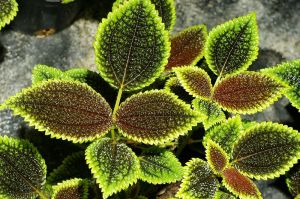How to Grow and Care for a Pilea ‘Moon Valley’ Plant
Hello, Judy. Can you please give me some information about Pilea ‘Moon Valley?
thank you
Hi Peggy,
There are over 600 different varieties of Pilea and the care instructions for all of them are just about the same.
Light: All Pilea plants need bright indirect light. Direct sun burns the leaves not enough light causes a Pilea plant to become leggy.
Water: The soil should be slightly moist but not soggy at all times. In the cooler months or when your plant is not producing new leaves, allow the top 2-3 inches of soil to dry out before watering.
Fertilizer: Feed every two weeks when actively growing with a basic houseplant fertilizer at 1/2 the recommended strength.
Temperature: The best temperature is between 60°-75°F (15.6-23.9°C)
Humidity: Pilea plants require very high humidity. If your home is dry, place your Pilea on a tray of pebbles filled with water. Be sure the plant is sitting on the pebbles and not in the water.
Flowering: A Pilea produces very small flowers that are over- shadowed by their distinctive leaves.
Pests: Spider mites, aphids, fungus gnats, scale, and thrip
Diseases: Because of the high humidity a Pilea plant requires, both bacterial and fungal leaf spot disease is a problem. You can help prevent plant diseases by keeping the leaves dry and providing good air circulation around the plant. A commercial fungicide can be used to treat leaf spot disease.
Soil: Use a basic houseplant mix that is airy and drains quickly. Add some peat moss or other organic matter to help Pilea plants develop a good root structure.
Pot Size: These are one of the few plants do not like to be root bound; but since Pileas are small plants, their pot size is rarely larger than 8″.
Pruning: Pilea plants become very leggy and unattractive unless they are frequently cut back.
Propagation: Stem cuttings
Poisonous Plant Info: Non-poisonous

